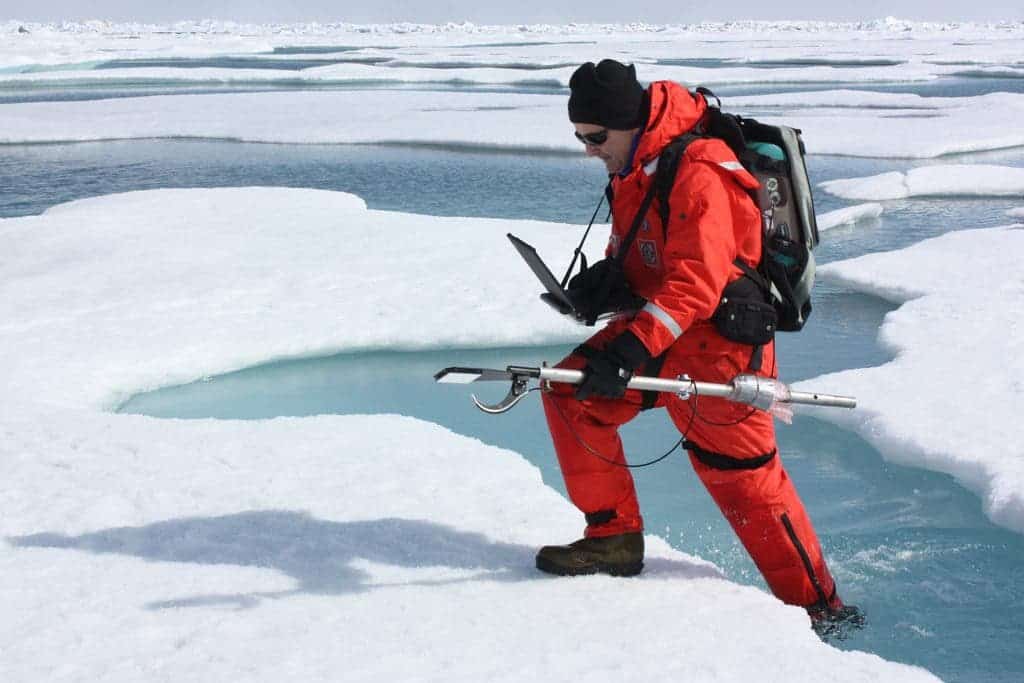Using both modern and historic measurements, researchers now have a more extensive view of how the Arctic sea ice has changed in the past few decades, finding that the ice is melting much faster than previously expected. The ice in the central Arctic Ocean thinned 65 percent between 1975 and 2012, from 11.7 feet (3.59 meters) to 4.1 feet (1.25 m).

Image credits: NASA.
“The ice is thinning dramatically,” said lead researcher Ron Lindsay, a climatologist at the University of Washington (UW) Applied Physics Laboratory. “We knew the ice was thinning, but we now have additional confirmation on how fast, and we can see that it’s not slowing down.”
Throughout its geological history, the Earth’s climate has changed numerous times – there were times when there were no polar ice caps at all, and there were times when most of the Earth was frozen. But the key word here is “geological” – all these changes occurred over hundreds of thousands of years, if not millions. The climatic changes we are now witnessing are, according to the geological record, unprecedented in terms of speed; we are just now starting to understand the dramatic impact that this temperature shift is having.
This particular study integrated all the studies documenting Arctic ice thickness; the data was acquired in a number of ways. For example, from 1975 to 1990, most ice-thickness readings were from under-ice submarines. These vessels once used sonar to measure ice drift so they could figure out where they could safely surface. The submarine data indicates that between 1975 and 2000 the ice thinned by 36 percent, which means that the rest of 29 percent thinned between 2000 and 2012.
“This confirms and extends that study,” Lindsay said. The larger data set used in the new study shows that the leveling off of sea ice thinning in the 1990s was only temporary, he said.
Since 2000, the satellite technology became viable enough to use it (along with airborne measurements) to estimate the ice’s thickness. While the ice’s extent is clearly visible from these measurements, thickness is more difficult to estimate, but it can be done. According to the study, direct, these measurements are just as accurate as hands-on ice-measuring methods used by people on the ground.
“Using all these different observations that have been collected over time, it pretty much verifies the trend that we have from the model for the past 13 years, though our estimate of thinning compared to previous decades may have been a little slow,” Schweiger said.
But not everyone is convinced; some researchers believe that there is not enough data to draw a definite conclusion and quantify the thinning of the Arctice ice. Julienne Stroeve, a sea ice researcher with the National Snow and Ice Data Center in Boulder, Colo., told Climate Central in an email:
“It would be great to have a long-term sea ice thickness dataset,” like the one Lindsay and Schweiger compiled, but there are inherent and varying biases in the data that make conclusions from such combined data hard to trust. Stroeve was not involved in the new study.
But even if the study overestimates (or maybe even underestimates) the rate at which the ice is thinning, it’s a step in the right direction – it’s an attempt to integrate different types of data, which is always challenging.
“This is just one attempt to put it together,” Lindsay said. “I think it is just a first step.”
The study was published in the journal The Criosphere. You can read the full article, for free HERE.


